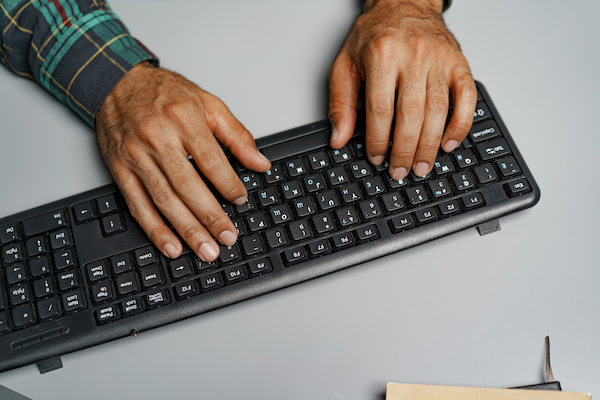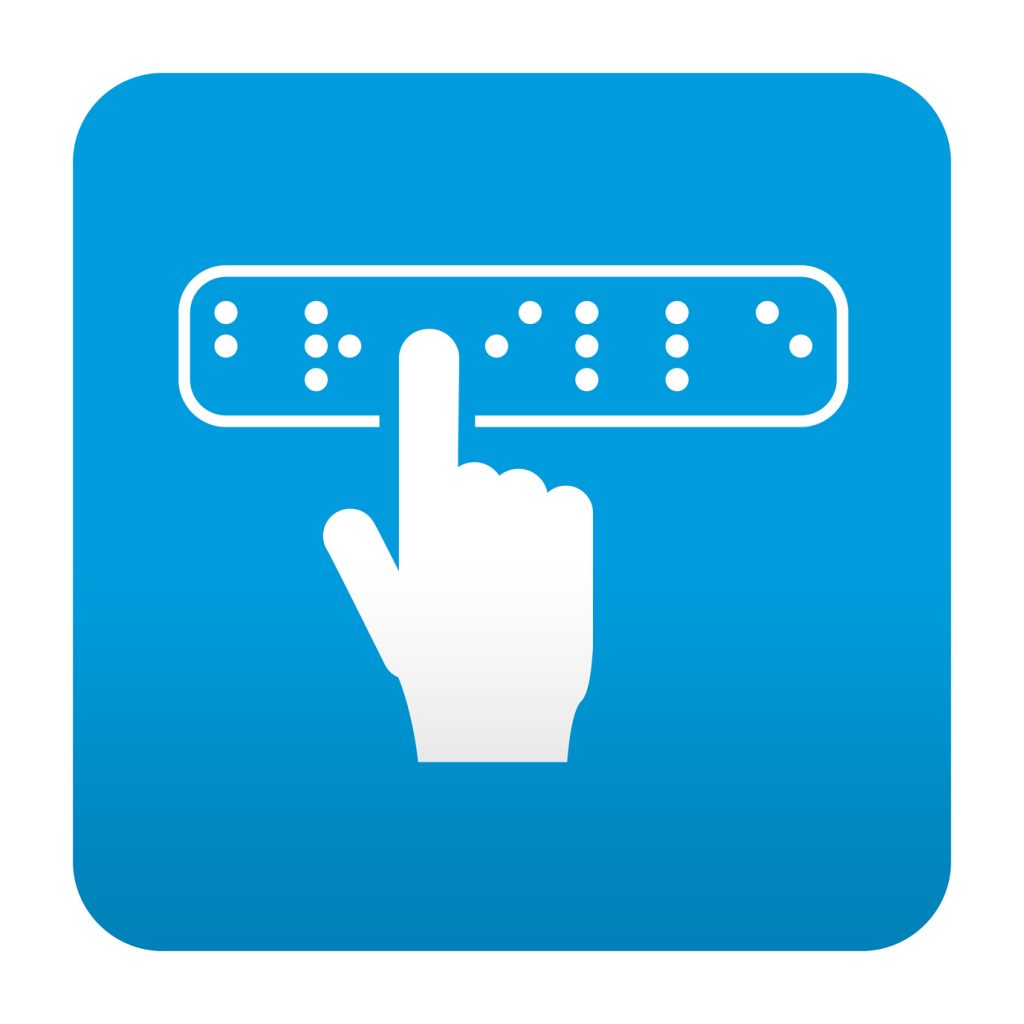Have you ever been in a rush and accidentally hit the wrong button on your phone? Now imagine if this were a critical button and you didn’t realize you hadn’t pressed it.
Haptic feedback is revolutionizing the way we interact with technology. From smartphones to medical devices, this technology provides users with a tangible, physical response to their actions.
Not only does haptic feedback improve accuracy and engagement, but it also enhances accessibility and cost-effectiveness.
In this blog, we will discuss
- What is haptic feedback?
- How haptic feedback works
- The difference between linear, clicky, and haptic switches
- The history of haptic feedback
- Examples of devices that use haptic feedback
- Where to find high-quality haptic feedback switches
Let’s dive in!
What is Haptic Feedback?
Haptic feedback (also known as tactile feedback) is what happens when high vibration patterns and waves are used to transmit information to a user or operator of an electronic device.
“Tactile” means “to touch,” which is appropriate here, considering many electronics and other products today are designed to relay information to their users via touch.
Phones and tablets with touchscreens are both excellent examples of products that use tactile feedback. Devices that use vibrations, such as putting a phone on the “vibrate” setting, are another example.
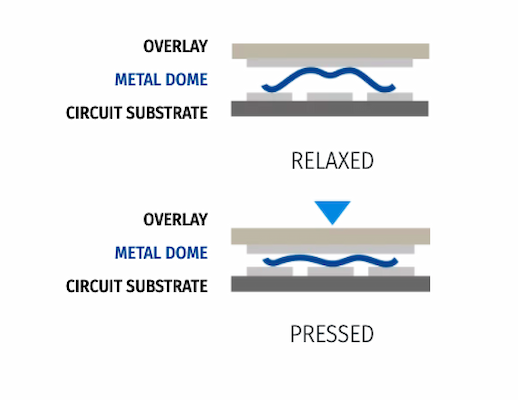
How Does Haptic Feedback Work?
Devices that use haptic feedback employ some kind of vibrating component, such as a vibration motor or linear resonant actuator. This vibrating component is operated by an electronic circuit.
Controllers determine when the device vibrates, the vibration pattern it uses, and other factors to customize the experience.
Our fingers can remember the tiniest details of subtle vibrational changes and immediately signal to us what they mean because the fingertips are one of the most sensitive areas on a human being. It is like learning a new language, but much simpler, and with virtually no risk of error after a couple of lessons.
Linear vs. Clicky vs. Haptic Switches
When it comes to mechanical keyboards, choosing the right switch can significantly impact your typing and gaming experience. There are three main types of switches, and each offers a unique feel and sound profile, catering to different preferences and use cases.
Clicky Switches
Clicky switches are perfect for writers, programmers, and anyone who enjoys audible feedback while typing. The distinct click sound and tactile response provide a highly satisfying experience.
However, they can be disruptive in shared spaces, so they may not be ideal for office environments or late-night use.
Characteristics:
- Tactile bump with a loud, distinct click sound
- Actuation Force: 50 g- 70 g
- Total Travel Distance: 4.0mm
- Best for: Typing-heavy tasks, mechanical keyboard enthusiasts
- Not ideal for: Quiet environments due to the noise level
Linear Switches
Linear switches are the top choice for gamers who need rapid and uninterrupted key presses. With no tactile bump or click, they allow for quicker actuation, making them ideal for fast-paced gaming scenarios.
However, they may not provide enough feedback for typists who prefer a more responsive feel.
Characteristics:
- Smooth keystrokes with no tactile bump or audible feedback
- Actuation Force: 30 g- 60 g
- Total Travel Distance: 4.0mm
- Best for: Gaming, rapid key presses, and fluid keystrokes
Tactile Switches
With tactile switches, you get the best of both worlds. Tactile switches are great for users who need feedback but don’t want a noisy keyboard.
They’re a versatile choice for both typing and gaming, making them ideal for office workers, students, and casual gamers who want a responsive yet quiet switch.
Characteristics:
- Noticeable tactile bump with minimal sound
- Actuation Force: 45 g- 60 g
- Total Travel Distance: 4.0mm
- Best for: Balanced use between typing and gaming
The Difference Between Haptic Feedback and Vibration Alerting
Both haptic feedback and vibration alerting use vibrations to communicate with users and often get confused with one another, but they differ in complexity.
Vibration Alerting
Uses simple, strong vibrations to notify users of an event. Vibration alerting simply notifies users by capturing their attention with strong vibrations.
Example: A car’s parking sensor vibrating when approaching an obstacle.
Haptic Feedback
Utilizes advanced waveforms to convey detailed information and simulates clicks and button presses with these predefined haptic waveforms.
Haptic feedback is commonly experienced through smartphones, gaming controllers, and other interactive devices and enhances user interaction by providing nuanced sensory information.
Example: A parking sensor varying vibration intensity based on distance from an object.
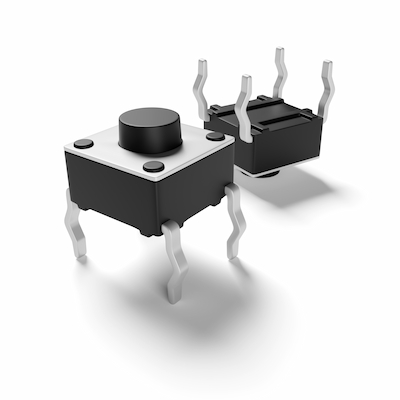
Types of Haptic Feedback
There are several types of haptic feedback systems, and each has unique methods of stimulating the skin, muscles, and even nerves to convey different sensations. Let’s explore the most common types of haptic feedback and their applications.
Vibrotactile Feedback
Vibrotactile feedback is perhaps the most common form of haptic feedback, utilizing vibrations to stimulate the skin. It’s often found in mobile phones, touchscreens, wearables, and gaming controllers.
This type of feedback is easy to create and control, making it popular for devices requiring simple tactile responses.
While vibrotactile feedback is effective for providing alerts, notifications, or simple touch interactions, its main limitation is its inability to emulate more complex physical sensations like pressure or texture.
Force Feedback
Force feedback takes haptic technology a step further by simulating physical pressure and weight, affecting the skin, muscles, and ligaments. This type of feedback is most commonly found in applications like driving simulators and haptic gloves.
Types Of Force Feedback Systems
Biomimetic Force Feedback
This type mimics human body parts or movements, often seen in exoskeletons or haptic gloves. These systems are designed to replicate the physical feeling of interacting with objects or forces in the real world, making them highly immersive for applications like medical training or virtual reality.
Non-Biomimetic Force Feedback
This form of feedback doesn’t replicate human body parts but still provides a sense of pressure or resistance. Examples include steering wheels in flight or driving simulators, where users feel realistic feedback from the virtual environment, such as steering resistance or bumps in the road.
Electrotactile Feedback
Electrotactile feedback uses electrical pulses to stimulate the skin and nerves, offering a unique way to simulate touch without the need for mechanical parts. Electrodes are placed directly on the skin, and the pulses adjust in current, voltage, and electrode size/material to create sensations of pressure, texture, or vibration.
This form of feedback is particularly useful in medical training, teleoperation, gaming, and virtual reality. It’s also valuable in applications where traditional mechanical feedback systems might not be feasible, such as in remote surgeries or telepresence systems.
Ultrasonic Tactile Feedback
Ultrasonic tactile feedback is a more advanced form of haptic technology that uses high-frequency ultrasound waves to simulate real-life objects and sensations. This feedback method creates turbulence in the air to simulate pressure or texture, providing a unique, hands-free haptic experience without the need for wearables.
One of the standout features of ultrasonic tactile feedback is its ability to enable natural movement for users. Since it doesn’t require direct contact with the skin, it allows for more fluid and intuitive interactions, making it ideal for applications like touchless interfaces or spatial simulations.
Thermal Feedback
Thermal feedback uses temperature changes to simulate sensations of heat or cold on the skin. This is achieved by applying actuators that convert energy into heat or cold.
While thermal feedback doesn’t require as many actuators as vibrotactile systems, it does require more power to produce realistic temperature changes.
Thermal Feedback Uses
This form of feedback is most commonly used in simulations and training environments, where users need to experience temperature-related sensations in addition to other haptic feedback. It is also used in consumer devices where environmental sensations, such as warmth or coldness, can enhance the user experience, like in certain wearables or gaming devices.
History of Haptic Feedback
The concept of haptic feedback has evolved significantly over the years. Tactile feedback is a more modern approach to the same basic principles that came before it.
Early Beginnings: Audio-Based Alerts
Traditionally, devices relied on audio feedback such as bells, beeps, and alarms to provide users with alerts and notifications. These auditory signals were effective but had limitations, especially for individuals with hearing impairments or in noisy environments where sounds could be easily missed.
Emergence of Tactile Feedback
Tactile feedback gained traction in the late 20th century when researchers and engineers began experimenting with ways to enhance user interaction with electronic devices. They realized that audio feedback could be improved upon by replacing it with devices that relied on the sense of touch.
Early implementations were seen in military and aviation applications, where pilots used force feedback controls to better navigate aircraft.
Adoption in Consumer Electronics
As the technology matured, consumer electronics companies began integrating haptic feedback into everyday devices. Mobile phones, gaming controllers, and medical devices started incorporating vibration-based feedback to improve user experience.
Studies conducted by top electronics manufacturers demonstrated that haptic feedback significantly enhanced usability, leading to widespread adoption across multiple industries.
In the 1970s, haptics entered mainstream video games, starting with Sega’s Motocross, followed by Nintendo’s RumblePak for its N64 console.
Modern-Day Applications
Today, haptic feedback is a standard feature in many modern devices, providing users with a more immersive and accessible way to interact with technology.
With continuous advancements, the future of haptic feedback holds even greater potential, promising further innovations in digital interaction.
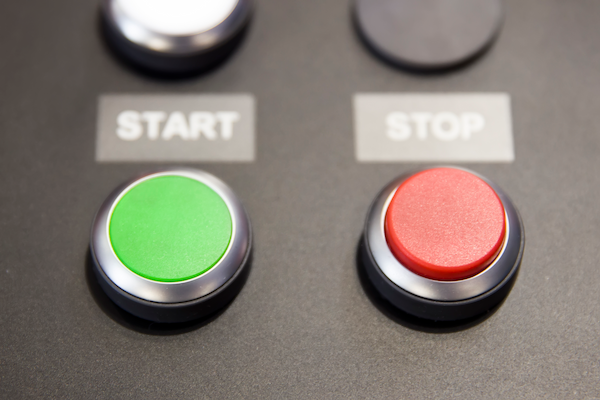
Benefits of Haptic Feedback
Haptic feedback is transforming the way we interact with technology by enhancing accuracy, accessibility, and efficiency. Whether in consumer electronics, medical devices, or industrial applications, this technology provides both users and companies with numerous benefits.
Improved Accuracy and Performance
One of the most significant benefits of haptic feedback is its ability to enhance user accuracy and performance. Devices that incorporate tactile feedback allow users to interact with digital interfaces in a more intuitive and precise manner.
Example: Virtual Keyboards On Touch Screens
When a user types, a short “button press” vibration effect confirms that a keystroke has been recognized. This small but crucial feedback mechanism makes typing more accurate and reduces frustration, as users can distinguish between a “tap” and a “long press.”
This enhancement helps create an experience that closely mimics typing on a physical keyboard, making touch-screen interactions smoother and more enjoyable.
Increased Accessibility
Haptic feedback devices are also making technology more accessible. Unlike audio cues, which can be difficult to perceive for individuals with hearing impairments, tactile feedback provides an inclusive solution that ensures all users receive the necessary signals.
This accessibility feature is particularly beneficial in applications such as navigation aids for visually impaired individuals, where vibrations can provide directional guidance without relying on visual or auditory cues.
Customization for User Preferences
One of the key advantages of haptic feedback is its ability to be customized based on user preferences. Users can adjust vibration intensity, duration, and pattern to create an experience tailored to their comfort and needs.
This personalization is a substantial improvement over traditional feedback methods, offering a more engaging and adaptable user experience.
Cost-Effectiveness for Companies
From a business perspective, haptic feedback technology is a cost-effective alternative to audio-based feedback systems. Tactile feedback devices are often cheaper to produce, making them an attractive option for manufacturers.
By reducing production costs while simultaneously improving user satisfaction, companies can benefit from increased customer retention and product appeal.
Enhanced Focus and Efficiency
Haptic feedback also improves task performance by allowing users to focus more effectively. When using devices with tactile responses, users receive immediate confirmation of their actions without needing to divert their attention from their primary task.
This is particularly crucial in fields like healthcare, where medical devices with haptic feedback help ensure patients do not miss their medication doses by providing a physical reminder. The ability to receive feedback through touch allows for better concentration and efficiency across various industries.
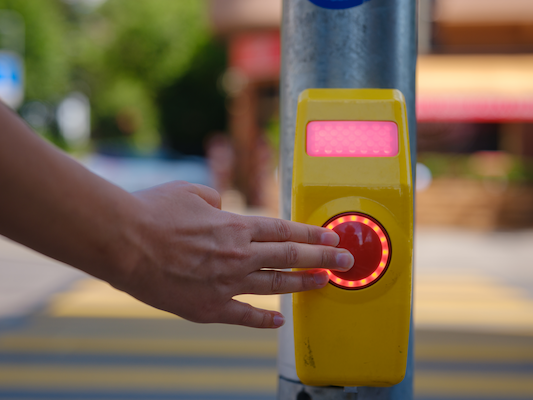
Examples of Devices That Use Feedback
Most people experience tactile feedback through their smartphones. However, smartphones are just the tip of the iceberg when it comes to real-world applications.
Tactile feedback is the future of electronics. Its applications are nearly endless, and it is poised to improve life at work, home, and school.
Automotive Applications
One common example is a car’s parking sensor. Older models used an audible beep to indicate proximity to an object, sometimes supplemented by a vibrating steering wheel.
Newer haptic feedback systems, however, provide a more nuanced experience by using varying vibration strengths and frequencies to convey different levels of proximity.
This makes parking assistance more effective, especially in noisy environments or for individuals with hearing impairments.
Gaming Controllers
Another key area of application is in gaming controllers, where haptic feedback enhances immersion by providing physical sensations that match in-game actions.
Players can feel the recoil of a gun, the impact of a crash, or the sensation of different terrains under virtual vehicles. This creates a more engaging and lifelike gaming experience.
Medical Devices
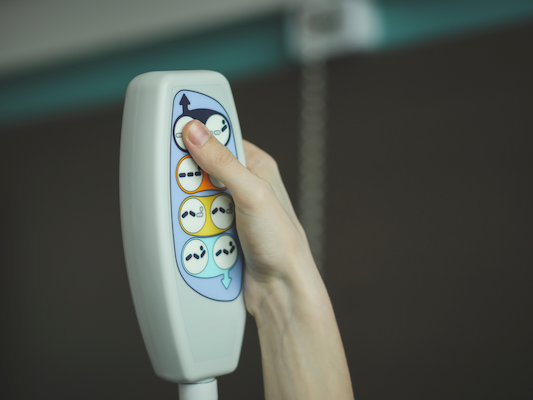
Medical devices also benefit significantly from haptic feedback. For instance, wearable health monitors and medication reminders use vibrations to alert patients to take their medication, reducing the likelihood of missed doses.
These subtle but effective signals can greatly improve adherence to treatment plans.
Industrial and Workplace Use
Even in the workplace, haptic feedback is proving its worth. Advanced touchscreen systems in industrial settings utilize tactile responses to confirm user inputs, minimizing errors and improving efficiency.
Employees working in high-noise environments benefit from these devices, as they provide crucial feedback without relying on audio cues.
Aerospace Applications
In the aerospace industry, haptic feedback plays a critical role in enhancing pilot control and situational awareness. Early implementations of tactile feedback were seen in military and aviation applications, where pilots used force feedback controls to navigate aircraft with greater precision.
Haptic technology allows pilots to feel real-time changes in altitude, airspeed, and aircraft attitude, providing tactile responses that enhance their ability to maintain control in high-stakes conditions. This technology is especially useful in ensuring that pilots can receive critical data without relying on visual or auditory cues in challenging environments.
Design a User-Friendly Membrane Switch With Hallmark Nameplate
If you’re looking to implement haptic feedback or design a custom membrane switch for your electronic devices, Hallmark Nameplate is here to help. Whether you need switches with tactile feedback or without, our team of skilled designers can craft a solution tailored to your specific needs.
We work across a wide range of industries, ensuring that your devices not only function perfectly but also provide a user-friendly and responsive experience.
At Hallmark Nameplate, we understand the unique requirements of your machines and are committed to delivering high-quality, durable membrane switches that meet your expectations. Request a FREE quote today and take the first step toward elevating your product with a top-tier membrane switch!


